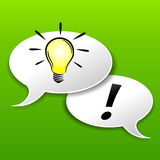How diverse are graphic novels? Not in themes, or character representation, but in actual non-fiction subjects?

Those exist, and more. I spent seven years (on and off) searching online for non-fiction graphic novels! (As well as buying them whenever possible!) I have an insatiable curiosity, love comics, so if I can combine the two, I’m happy! One of my biggest criticisms about books is that there are never enough pictures, especially in books about architecture! Comics solves that problem, and…I can prove to skeptics that comics have value! “See?! You can learn stuff from comics!” When they scoff at that, I slap them with a purloined copy of the safety instructions from a 737. (If I’m really angry, I make them assemble Ikea furniture.)
I actually tried to find a graphic novel for every section of the Dewey Decimal Classification. That’s 1,000 numbers, the digits that come before the “point”. As of January 2015, I have found 506 sections which contain at least one graphic novel in at least one library on this planet. (I’ll publish the lists here later, if there is enough demand. Otherwise, read further for a link to my spreadsheets.)
Now, I expect most of you to read this, nod your head, and move on to the next article about Hollywood. That’s fine. I don’t expect anything I do to go viral. But if you’re bored, or a librarian, or want a list of books you didn’t know existed in such a wide spectrum, read on!

So I passed that class with an A, got my degree, and moved on. Years later in 2007, bored one night in the basement of NYU’s library, I resurrected the idea. Time had passed. Manga was becoming popular, and almost every comics publisher sold books to libraries and bookstores. Could I find titles for EVERY Dewey number? OCLC, which manages library cataloging for thousands of libraries around the planet, offered database access to libraries. (WorldCat offers two services: the regular website for bibliophiles everywhere; and the more robust database available to member libraries.) After surfing the learning curve, I figured out how to do specific batch searches systematically. A few keywords, a few wildcards, and I could discover new titles! Thus the Comics Library Project One Thousand was born! (CLiP1K, for short.)
The result… I think I might have found about three hundred examples initially. So I put it aside, until 2014. By then, book publishers of all sorts had discovered graphic novels, and I was able to fill in many more sections. Having now reached 50%+, I’m publishing my results, and letting anyone to go and add more titles, or do whatever. I’m tossing this butterfly out into the wild. It might flutter its wings and create a hurricane a few years later. Or it might get hit by a semi-truck.
- OCLC, for allowing me to use their database, and copy information. Here’s the copyright notice, just to be certain: All copyright rights in the Dewey Decimal Classification are owned by OCLC Online Computer Library Center, Inc. (“OCLC”). WorldCat is copyright 1978-2015 OCLC. Dewey, Dewey Decimal Classification, OCLC and WorldCat are registered trademarks/service marks of OCLC. Used with Permission.
- The many libraries who had the foresight to catalog graphic novels as regular books. Specifically:
- The San Francisco Public Library
- The Berkeley Public Library (both encouraged by the great Rory Root!)
- The National Library Board of Singapore, which is a crossroads of languages and cultures!
- The New York Public Library (where I was able to analyze old “cartoon” books to see if they qualified!)
- The Brooklyn Public Library (not so much visited, but it offers a robust searchable online catalog. Christian Zabriskie, you rock!)
- Amazon.com (their “look inside” feature helped me judge if a title was an actual graphic novel)
- New York University and the New York Public Library, for offering access to OCLC’s First Search database. My library card is the most valuable card in my wallet, and I recommend you get one, no matter where you live! There’s so much you can do online with it! If nothing else, you can get ebooks!
- The Omaha Public Library, which employed me during my college career, and offered access to OCLC’s network, back when it was text only! 4,3,3,1!
- All of my library friends, and the librarians everywhere who select, catalog, and advocate for graphic novels, and all the other cool stuff found in libraries!
My methodology:
- I scraped my brain for anything I could think of. There are certain authors who are pioneers of non-fiction graphic novels. These were the low-hanging fruit.
- Using OCLC’s First Search database, I used the following in the advanced search field:
- kw: comic or ((kw: Graphic and kw: novel)) and dd: 631* and dt= “bks” [“631” being whichever Dewey section I was searching.]
- [“comic” was problematic when searching languages and literature. Search terms were modified for the 400s and 800s.]
- From the list of possible titles, I would click through to the actual record. I would verify the format, usually via Amazon’s sample pages.
- If a graphic novel, I would then search for a library which had cataloged it with the Dewey number. If the OCLC record showed it as being cataloged by a national library, I took it as gospel, as many libraries would replicate the cataloging.
- If not, I would then access the listing of libraries which owned a copy of the title, and search each for an example of the title cataloged under the Dewey number. Sometimes, the title would be under a different Dewey number, and I might use that title to fill another section.
- Some Dewey sections have never been used, some have been deprecated, and others have been activated over the years. (For example: digital photography.) If I found a valid title, I added it. Otherwise, those sections are noted in my searching totals, and on the spreadsheets. There are 74 sections which are inactive, and without a title. This may change.
- An alternate method: find a library catalog which allowed for robust searching, and scan the ordered results for possible suggestions. Then work backwards, finding the title data on First Search.
My results:
| CLASS | ALL | FOUND |
| 000 | 49 | 35 |
| 100 | 45 | 35 |
| 200 | 53 | 45 |
| 300 | 77 | 71 |
| 400 | 43 | 28 |
| 500 | 66 | 62 |
| 600 | 60 | 55 |
| 700 | 57 | 53 |
| 800 | 51 | 50 |
| 900 | 79 | 72 |
| TOTALS | 580 | 506 |
ALL = Found + Inactive sections
What does this all mean? Social sciences (300s) have a lot of coverage in graphic novels! As does Science (500), Technology (600), Arts (700) and History (900).
Here’s the breakdown by division:
Divisions with NO results: 16X (Logic) and 40X (General Language)
The 400s (Language) and 800s (Literature) are problematic, as each division is a specific language, and the structure repeats. For example, I could not find examples of grammar graphic novels (4X5) or speeches (8X5).
White = searched, in the middle of results, 5-7 titles found
Yellow = 8 or 9 titles found
Purple = 4 or fewer titles found
Want to participate? Download my spreadsheets. Check for empty numbers. Recommend titles below in the comments. Include a public URL link to the actual record at a library, showing the call number. If someone actually wants to create a website, where each page is a call number containing lists of titles, go right ahead!
If you’re a publisher, notice the opportunity! Especially in “how-to”! If Ikea can publish a comic book set of instructions for every piece of furniture they sell, YOU can publish a book on how to do anything!
Thanks for reading!











One possible error (probably from the OCLC source) but Gail Simone’s Villains United is listed under the 481’s (Classical Greek writing)
None of the libraries that own it have it this way (though most use Library of Congress) but “Gods of Asgard” http://www.amazon.com/Gods-Asgard-graphic-novel-interpretation/dp/0976902524/ref=sr_1_1?s=books&ie=UTF8&qid=1429043228&sr=1-1&keywords=Mythology%2C+Norse. might fit into the 293 area.
Thanks, David… for reading the spreadsheet and checking my data!
Let me check my spreadsheet…
481 Classical Greek writing & phonology 481 Villains united /
Simone, Gail. Eaglesham, Dale. Semeiks, Val.
2005 63516320
LCCN: 2006-282054
http://www.loc.gov/z39voy?operation=searchRetrieve&version=1.1&recordSchema=marcxml&startRecord=1&maximumRecords=10&stylesheet=http://www.loc.gov/z3950/owcbrief.xsl&query=bath.standardIdentifier=140120838X
140120838X (pbk.); 9781401208387
Library of Congress. I know they don’t use Dewey in their holdings, but that falls under Step Four of my methodology (National Library). Visit the website for confirmation!
Here’s a cleaner URL:
http://catalog.loc.gov/vwebv/staffView?searchId=18483&recPointer=5&recCount=25&bibId=14531578
…and thanks for the Asgard ref! Looks interesting! Xeric Award winner!
logicomix should work for the 16X section.
Anselme Lanturlu (Archidald Higgins) for a few science sections possibily ?
@Nimmy
Citation?
It’s not that a book CAN be cataloged under a particular DDC, but HAS IT been cataloged as such?
Most European libraries do not use DDC. (And/Or are not members of OCLC.)
There was also the tendency of libraries to catalog most graphic novels as 741.5 pre-Y2K.
The first Higgins book, “Euclid…” is found under 516 at Dunedin, NZ, but that’s already taken.
Thanks for the Higgins suggestion! Looks interesting! Especially for something that was published back in the 1980s!
Comments are closed.